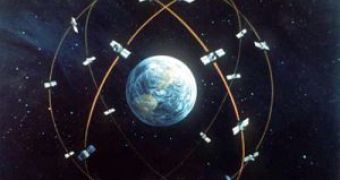Greenhouse gases raise temperatures near the Earth's surface, but they cool and contract the high atmosphere and may change the orbits of global-positioning systems (GPS) satellites.
In the Earth's lower atmosphere, carbon dioxide traps solar energy, heating the air, but in the upper atmosphere the greenhouse gas causes the thin upper air to reflect energy more rapidly into space, cooling it. An increase of carbon dioxide in Earth's atmosphere will change the way satellites are launched. "Temperature directly affects atmospheric density," said Jan Lastovicka, of the Institute of Atmospheric Physics in Prague.
"As the upper atmosphere pulls in closer to Earth, the air at altitudes where low-orbit satellites reside will be less dense, meaning the craft can more easily maintain orbit and therefore last longer," Lastovicka said. "At altitudes between 200 and 800 kilometers, atmospheric drag causes measurable decay of the orbits of satellites and space debris."
But spacecrafts, including those launching new satellites into orbits, currently jettison booster rockets and other debris at about the same altitude. "If the atmosphere contracts, there will be less atmosphere up there to get rid of all the junk," said John Emmert of the U.S. Naval Research Laboratory's E. O. Hulburt Center for Space Research in Washington, D.C. "As conditions continue to change, space agencies will need to reevaluate their launch procedures to avoid increased risk," he said.
Changes in the high atmosphere could also affect signal transmission from the 24 GPS satellites, which are used for navigation, from jetfighters to cell phones to precisely locate them. Inside the exosphere (the highest layer of the atmosphere) there is a region called the ionosphere, where charged particles help reflect radio waves back to Earth receptors. Changes in the ionosphere provoked by solar storms or cosmic radiation affect the way radio signals travel through the atmosphere, making GPS systems less effective.
The upper atmosphere temperature, at 217 miles (350 km) is decreasing at a rate of 9 to 18?F (5 to 10?C) a decade, maybe even up to 30?F (17?C) a decade, as some studies found.
In the lower atmosphere, the air density has decreased by 2 % to 3 % a decade, and the phenomenon has accelerated both after 1980. "The upper atmosphere is generally cooling and contracting," the scientists wrote. Human-generated greenhouse gases "influence the atmosphere at nearly all altitudes between ground and space, affecting not only life on the surface but also the space-based technological systems on which we increasingly rely."

 14 DAY TRIAL //
14 DAY TRIAL //